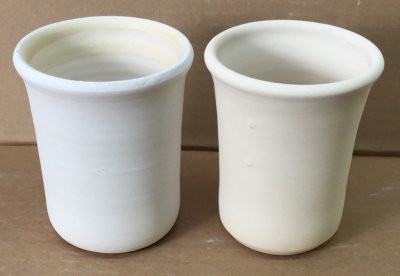Ceramic work is typically fired twice.
Glaze fire ceramics definition.
Hopefully you will benefit from annie s advice too.
Many of the traditional glaze materials used in this range are quite toxic in their raw state.
Glaze definition to furnish or fill with glass.
Intended primarily for sculpture and decorative pieces glazes created by amaco mayco duncan and others for low fire environments can be used with terra cotta earthenware and select stoneware clays to produce brilliant colors and stunning effects.
Denver colorado ceramic artist annie chrietzberg is the polar opposite of me in the glaze room.
Glazes can be applied with a brush or the entire piece can be carefully dipped into a glaze bath.
Ceramic glaze is an impervious layer or coating applied to bisqueware to color decorate or waterproof an item.
Historically across the world it has been developed after.
Low fire glaze colors can appear rather harsh and raw looking.
To glaze a window.
It also gives a tougher surface.
The high percentage of flux or stronger acting fluxes used can result in a softer less durable glaze and.
It is bisque fired and then glaze fired.
When that time comes and the piece is dry you re ready for the glaze firing where the pottery is heated to maturity.
It may or may not be glazed.
Glazes often require multiple coats and a lot of patience to get them just right.
Whether vitrified or not it is nonporous does not soak up liquids.
A modern technical definition is a vitreous or semi vitreous ceramic made primarily from stoneware clay or non refractory fire clay.
Firing converts ceramic work from weak clay into a strong durable crystalline glasslike form.
For earthenware such as fired clay pottery to hold liquid it needs a glaze.
Glaze can serve to color decorate or waterproof an item.
Glaze is also used on stoneware and porcelain.
I know my glazing outcomes could be greatly improved if i followed just a couple of annie s pottery glazing tips.
Firing clay from mud to ceramic.
Jennifer poellot harnetty editor.
Potters apply a layer of glaze to the bisqueware leave it to dry then load it in the kiln for its final step glaze firing.
Glazing renders earthenware vessels suitable for holding liquids sealing the inherent porosity of unglazed biscuit earthenware.
The goal of bisque firing is to convert greenware to a durable semi vitrified porous stage where it can be safely handled during the glazing and decorating process.
Stoneware is a rather broad term for pottery or other ceramics fired at a relatively high temperature.
Next we ll talk about different types of kilns.
The clay body may remain overly porous.

